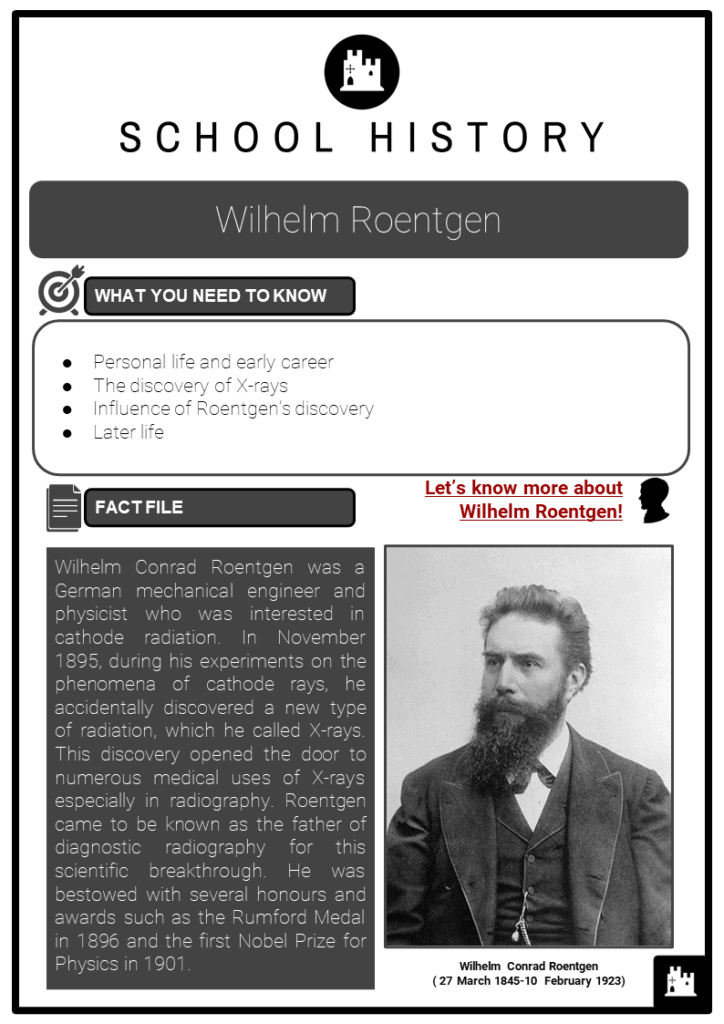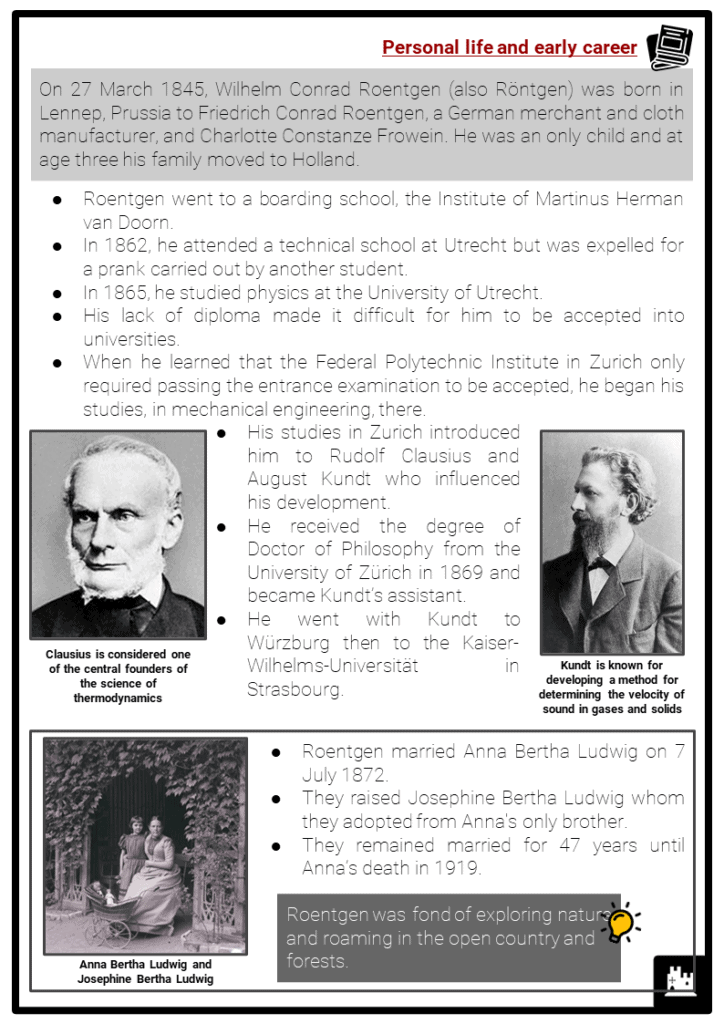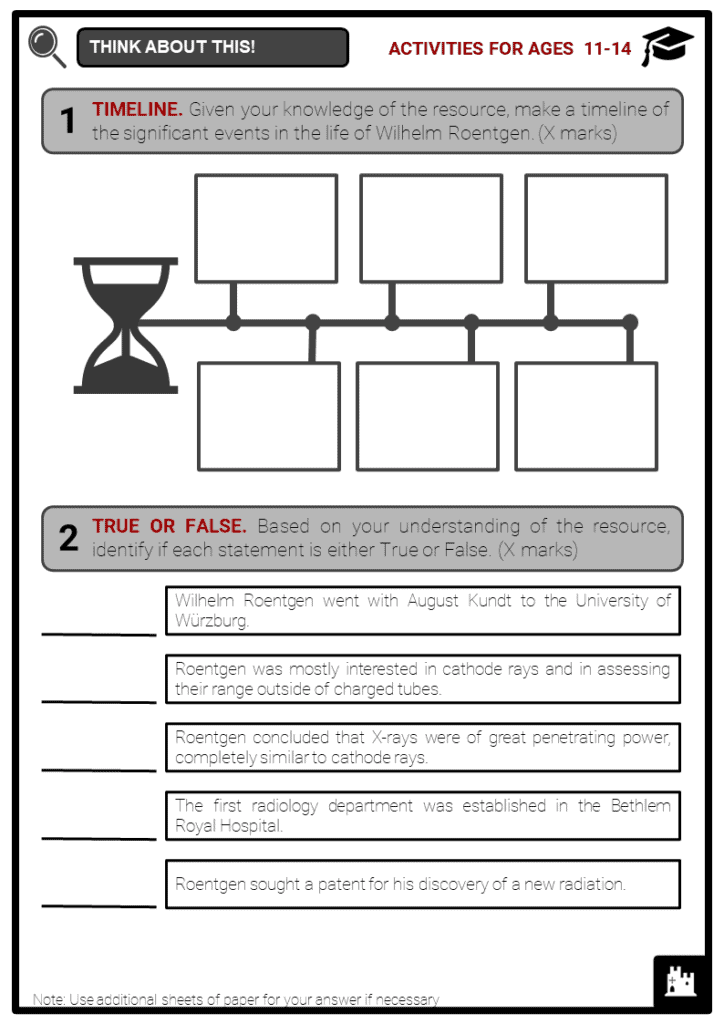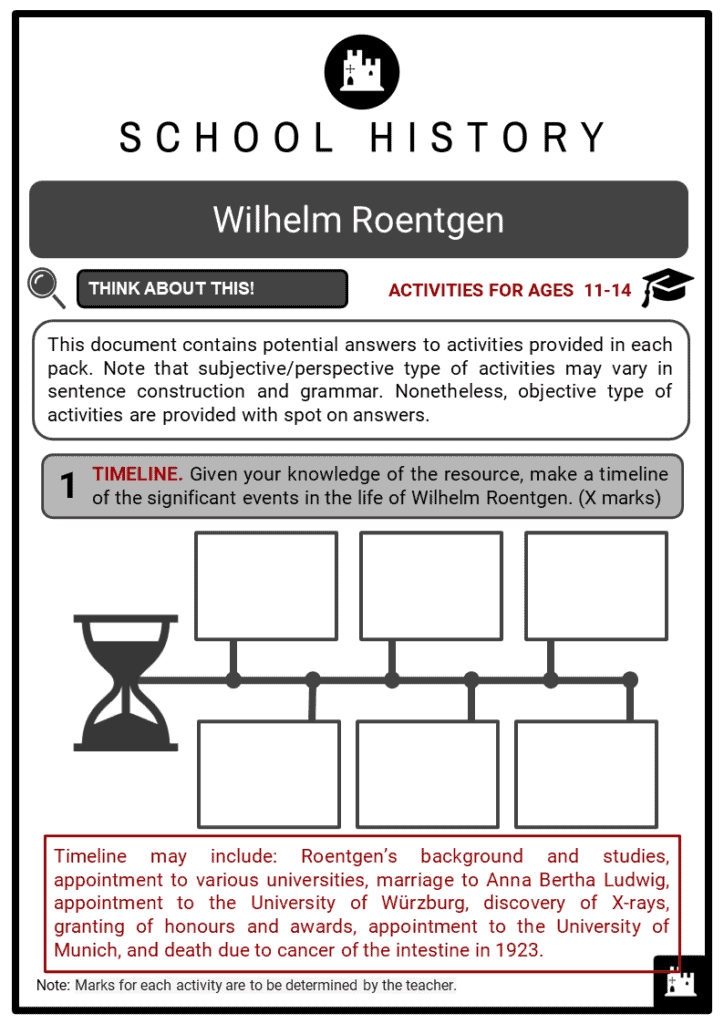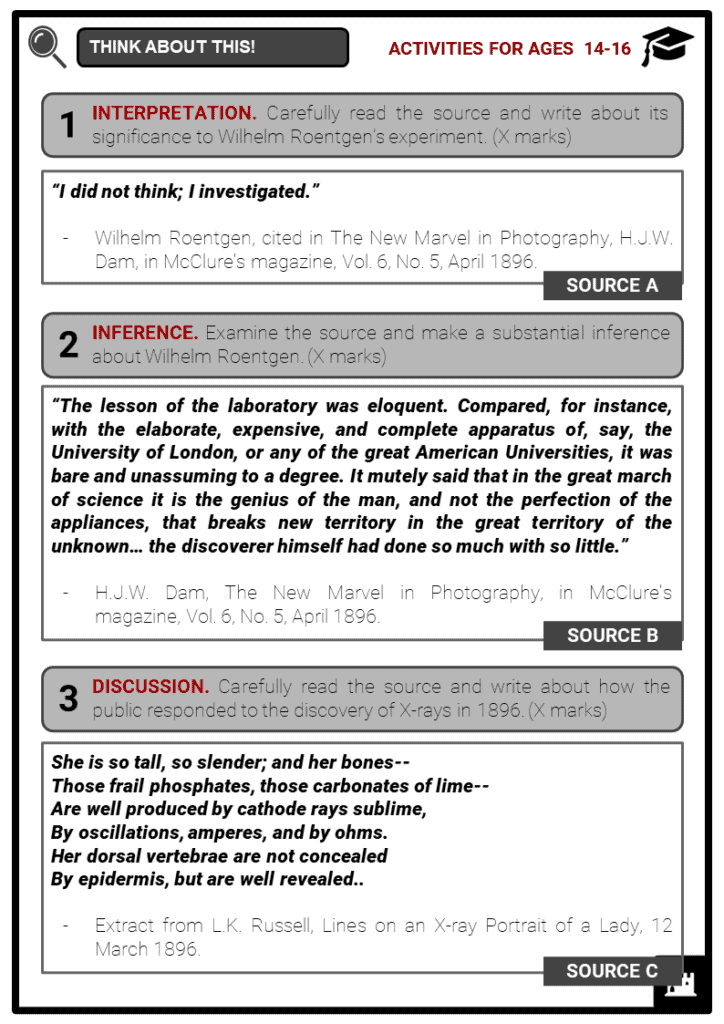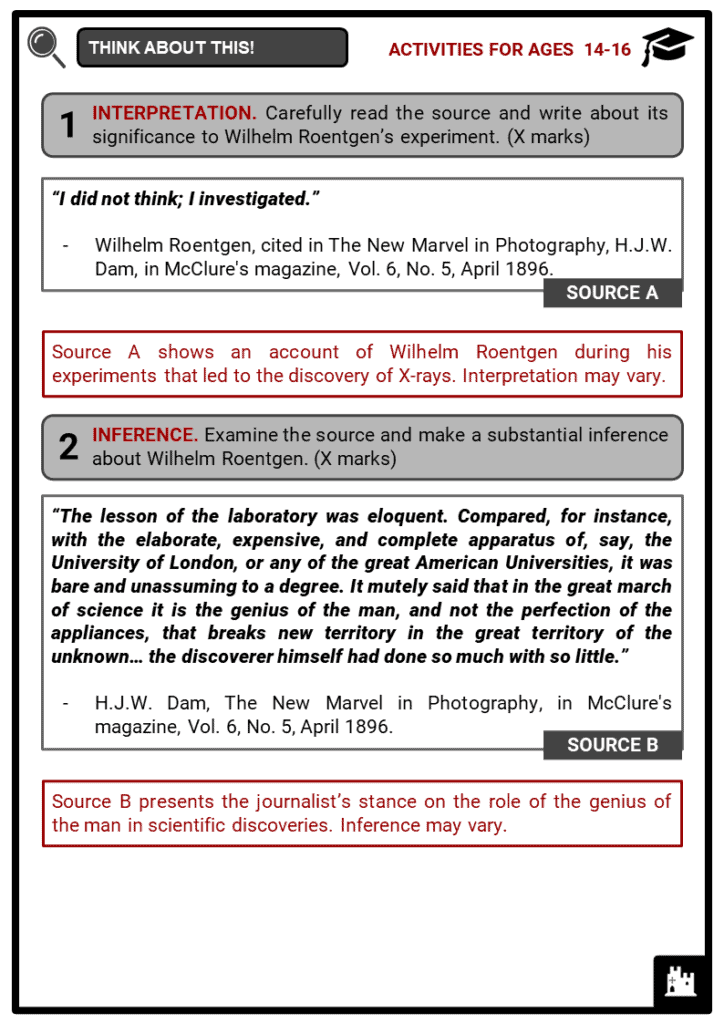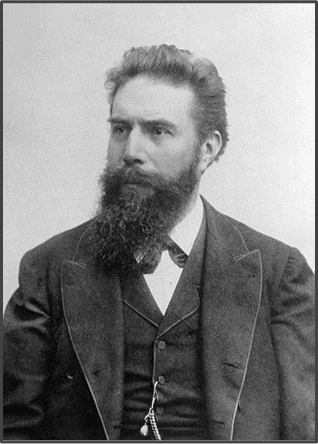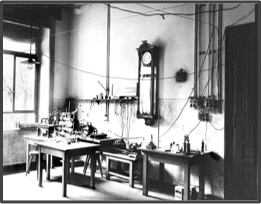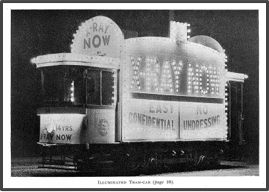Download Wilhelm Roentgen Worksheets
Do you want to save dozens of hours in time? Get your evenings and weekends back? Be able to teach Wilhelm Roentgen to your students?
Our worksheet bundle includes a fact file and printable worksheets and student activities. Perfect for both the classroom and homeschooling!
Table of Contents
Add a header to begin generating the table of contents
Summary
- Personal life and early career
- The discovery of X-rays
- Influence of Roentgen’s discovery
- Later life
Key Facts And Information
Let’s know more about Wilhelm Roentgen!
- Wilhelm Conrad Roentgen was a German mechanical engineer and physicist who was interested in cathode radiation. In November 1895, during his experiments on the phenomena of cathode rays, he accidentally discovered a new type of radiation, which he called X-rays. This discovery opened the door to numerous medical uses of X-rays especially in radiography. Roentgen came to be known as the father of diagnostic radiography for this scientific breakthrough. He was bestowed with several honours and awards such as the Rumford Medal in 1896 and the first Nobel Prize for Physics in 1901.
Personal life and early career
- On 27 March 1845, Wilhelm Conrad Roentgen (also Röntgen) was born in Lennep, Prussia to Friedrich Conrad Roentgen, a German merchant and cloth manufacturer, and Charlotte Constanze Frowein. He was an only child and at age three his family moved to Holland.
- Roentgen went to a boarding school, the Institute of Martinus Herman van Doorn.
- In 1862, he attended a technical school at Utrecht but was expelled for a prank carried out by another student.
- In 1865, he studied physics at the University of Utrecht.
- His lack of diploma made it difficult for him to be accepted into universities.
- When he learned that the Federal Polytechnic Institute in Zurich only required passing the entrance examination to be accepted, he began his studies, in mechanical engineering, there.
- His studies in Zurich introduced him to Rudolf Clausius and August Kundt who influenced his development.
- He received the degree of Doctor of Philosophy from the University of Zürich in 1869 and became Kundt’s assistant.
- He went with Kundt to Würzburg then to the Kaiser-Wilhelms-Universität in Strasbourg.
- Roentgen married Anna Bertha Ludwig on 7 July 1872.
- They raised Josephine Bertha Ludwig whom they adopted from Anna's only brother.
- They remained married for 47 years until Anna’s death in 1919.
- Roentgen was fond of exploring nature and roaming in the open country and forests.
- In 1875, he became a professor at Hohenheim, Württemberg, and went back to Strasbourg a year later.
- On the recommendation of Hermann Helmholtz, he received a professorship at the University of Giessen.
- In 1885, he was appointed to the chair of physics at the University of Würzburg.
The discovery of X-rays
- It was at the University of Würzburg that Roentgen made his discovery of a new type of radiation in 1895. The discovery came about during his investigation of the phenomena of cathode rays.
- At Würzburg, Roentgen dedicated his experiments to light phenomena and other emissions generated by discharging electrical currents in Crookes-Hittorf tubes.
- These tubes were glass bulbs with positive and negative electrodes, evacuated of air, which displayed a fluorescent glow when a high voltage current was passed through them.
- He was mostly interested in cathode rays and in assessing their range outside of charged tubes.
- Previous works in the same field had been carried out by other physicists.
- During his experiments, Roentgen observed that a distant fluorescent screen started glowing as a result of the operation of the Crookes-Hittorf tube, despite the fact that the tube at the time was surrounded by heavy paper that was opaque to ordinary light rays.
- He tried this several times and observed the same shimmering each time.
- From 8 November 1895, he repeated his experiments and took note of the results.
- He worked for seven weeks in the laboratory in solitude, initially keeping his scientific findings to himself, not sharing them with his assistants, colleagues or even his wife.
- Roentgen concluded that these rays of great penetrating power, entirely different from cathode rays, were due to some unknown form of radiation, which he temporarily named X-rays.
- X-rays are electromagnetic energy waves that behave similarly to light rays, but at wavelengths approximately 1,000 times shorter than those of light.
- He found out that X-rays could penetrate human flesh but not higher-density substances such as bone or lead, and that they can be photographed.
- Following his astounding discovery, Roentgen carried out his first photographs not only on metal objects but also on his wife’s hand with her wedding ring.
- He was able to see right through his wife’s hand since her flesh became transparent, whereas the wedding ring appeared like a dark shadow.
- These photographs came to be known as roentgenogram.
- By 28 December 1895, Roentgen published his findings in the paper "On a New Kind of Rays" and submitted it to the Proceedings of the Würzburg Physico-Medical Society.
- In January 1896, he presented and demonstrated his discovery before the same society.
- His discovery of a new type of radiation was reported by an Austrian newspaper.
- From there, the news spread quickly throughout the world.
- For his discovery, Roentgen was awarded an honorary Doctor of Medicine degree from Würzburg.
- This was followed by the awarding of the Rumford Medal of the British Royal Society, the Royal Merit of the Bavarian Crown, the Order of the Iron Cross from Germany, and the first Nobel Prize for Physics in 1901.
Influence of Roentgen’s discovery
- The significance of Roentgen's discovery was recognised in the medical community. Not long after his findings were made public, the X-ray saw its first clinical use.
- Other experimenters became inspired to try Roentgen's discovery.
- After Roentgen, Scottish electrical engineer Alan Archibald Campbell-Swinton was the first to produce an X-ray of a hand.
- The first clinical use of X-rays was carried out by John Hall-Edwards in Birmingham, England on 11 January 1896, when he radiographed a needle stuck in the hand of an associate.
- Hall-Edwards proceeded to use X-rays in a surgical operation.
- Also in early 1896, Ivan Romanovich Tarkhanov carried out X-rays on frogs and insects and arrived at the conclusion that the rays affected the living function of his test subjects.
- The first radiology department was established in the Glasgow Royal Infirmary with John Macintyre as the head of department.
- He carried out some outstanding X-rays which clearly indicated the presence of a kidney stone, and in another instance, a penny in the throat of a child.
- In the United States, Frank Austin of Dartmouth College made a number of X-ray photographs, including one of his own hand using a Puluj lamp in January 1896.
- By February 1896, on Austin’s suggestion, the first medical X-ray in the US was carried out by Gilman and Edwin Frost to produce a plate of a patient's Colles fracture.
- Soon, there were attempts made to insert metal rods or inject radio-opaque substances to give clear pictures of organs and vessels, which produced mixed results.
- In early 1896, the first angiography, moving-picture X-rays and military radiology were performed.
- Certainly, Roentgen’s contribution to medicine is paramount.
- In 1928, the legacy unit of measurement for the exposure of X-rays and gamma rays, roentgen (R), was named after him.
- The discovery of X-rays also resulted in increasing public interest in its purpose in other areas.
- With the apparatus for producing X-ray becoming widely available, studios opened to take 'bone portraits'.
- The new type of radiation became the theme of poems, political cartoons, short stories and advertising.
- It is important to note that during this time, the potential dangers that radiation could have on the body were still unknown.
- Scientists, physicians and inventors who had experimented with X-rays reported cases of burns and hair loss.
- However, many physicians claimed that there were no effects from X-ray exposure.
- Consequently, the hazards of radiation exposure were not immediately discovered.
- Through experiments and research in the following years, the harmful physiological effects of exposure to X-rays and other ionising radiations were identified:
- Temporary blood changes from relatively minor overexposure
- Permanent blood changes (aplastic anemia) from long-term exposure
- An increased incidence of cancer (including leukemia)
- A general ageing effect (life shortening)
- Cataracts
- The hazards implicit in the use of X-ray ushered in the need for protective measures.
- The medical uses of X-rays were indisputable thus safety procedures had to be established to reduce the risks involved in handling X-ray radiation.
Later life
- Roentgen decided against seeking a patent for his discovery, believing that his research should be widely available to the public without charge. He also donated a portion of his Nobel Prize money to research at Würzburg.
- Roentgen’s final appointment was that of professor of experimental physics at the University of Munich from 1900 to 1920.
- He conducted numerous other researches, including the investigation of the ratios of specific heat of gases, studies in elasticity and capillary action, measurements of the heat conductivity of crystals, the absorption of radiation by water vapour, investigations of the rotation of the plane of polarisation of polarised light, and a study of piezoelectricity.
- He fell into bankruptcy due to the inflation following the First World War.
- He spent his final years at his country home in Weilheim near Munich.
- He died of cancer of the intestine on 10 February 1923.
- In 2004, the International Union of Pure and Applied Chemistry (IUPAC) named element 111, roentgenium, a radioactive element with multiple unstable isotopes, after him.
Image sources:
- https://upload.wikimedia.org/wikipedia/commons/thumb/7/71/Roentgen2.jpg/427px-Roentgen2.jpg
- https://upload.wikimedia.org/wikipedia/commons/thumb/d/d2/Room_where_R%C3%B6ntgen_found_x-rays.jpg/778px-Room_where_R%C3%B6ntgen_found_x-rays.jpg
- https://upload.wikimedia.org/wikipedia/commons/thumb/8/85/Illuminated_tram-car_%22Glasgow%27s_X-ray_campaign...%22%2C_1957_Wellcome_L0016012.jpg/800px-Illuminated_tram-car_%22Glasgow%27s_X-ray_campaign...%22%2C_1957_Wellcome_L0016012.jpg

